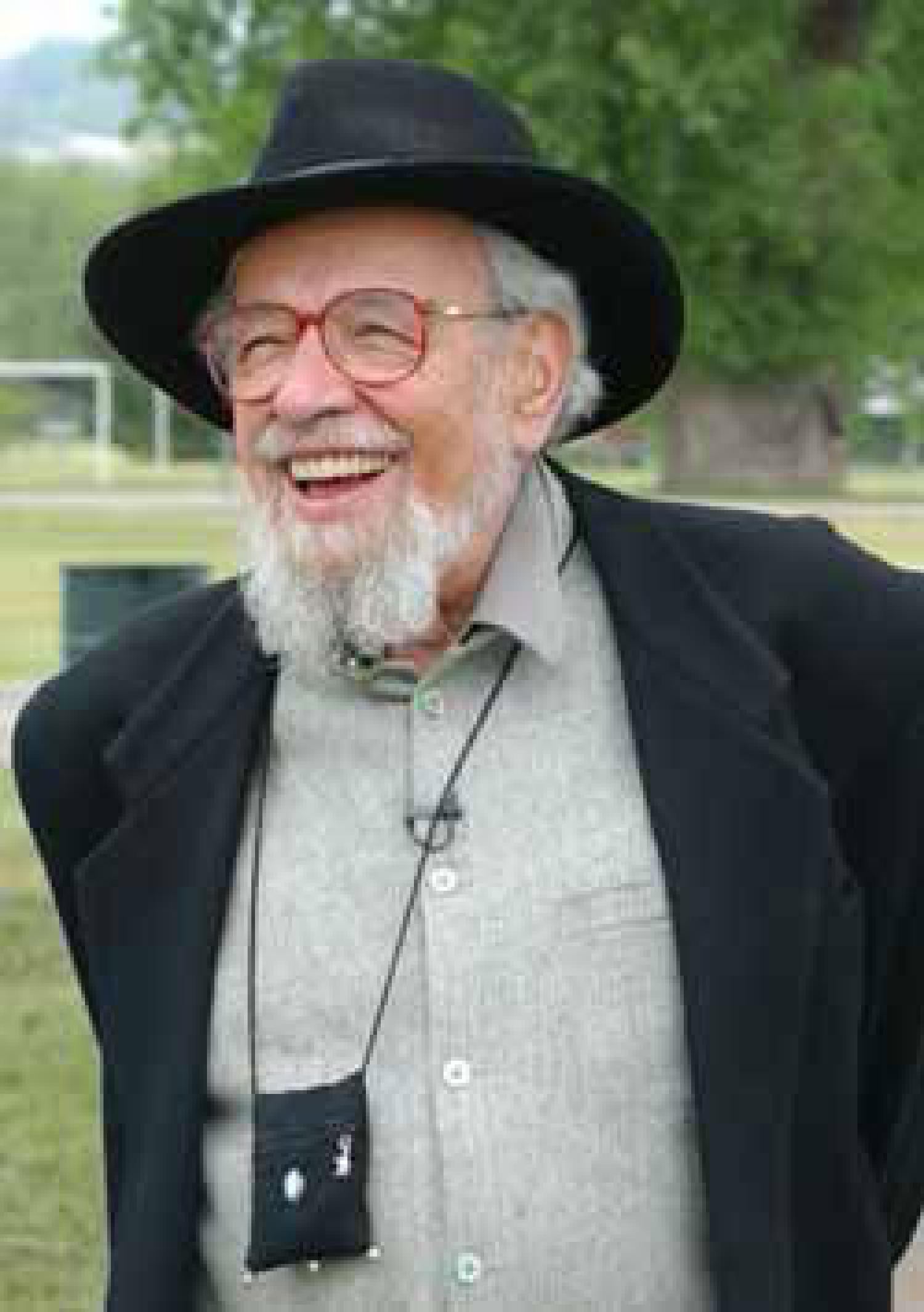Jewish Renewal archives find home at CU
Rabbi Zalman Schacter-Shalomi was born in Poland, grew up in Austria, fled Nazi oppression in Europe, was ordained in Chabad Lubavitch Hasidism in America, and launched a new hybrid of Judaism for the world.
Reb Zalman, as he is commonly known, founded the Jewish Renewal movement in the 1960s. Described as a trans-denominational movement grounded in Judaism’s prophetic and mystical traditions, Jewish Renewal strives “to fully include all Jews and to respect all peoples.”
Now, the foundational documents of the Jewish Renewal movement have found a permanent home in the University of Colorado Library Archives. The documents include Reb Zalman’s personal papers and audio-visual materials.
The Reb Zalman archives are the second major gift of scholarly resources on Judaism and Jewish culture the university has accepted in recent months. In October, Brian E. Lebowitz donated 19,000 works of 20th century Jewish-American Literature, which will also be housed at the CU libraries.
Until recently, the Reb Zalman collection was housed at Naropa University, where he held the World Wisdom Chair from 1995 to 2004.
“Being housed at a major public university like CU not only signifies the importance of the collection but more importantly serves as the means of providing broad access to these materials to students and researchers,” Netanel Miles-Yepez, director of The Reb Zalman Legacy Project, said in a statement.
David Shneer, associate professor of history and director of CU’s Program in Jewish Studies, also hailed the acquisition, saying it makes the university a world hub for the study of Jewish Renewal specifically and Jewish mysticism generally.
Reb Zalman, who appeared on campus in January at a celebration of the acquisition, talked about the evolving face of Judaism. Long ago, he said, there was a “pre-patriarchal Judaism.”
The faith underwent a “paradigm shift” when an angel instructed Abraham not to sacrifice his son, Reb Zalman said. It underwent another shift in the “post-Holocaust, post-Nagasaki” era.
Initially, he believed that “We have to restore Judaism to bring it back to where it was before the destruction of European Judaism.”
As he mulled over these ideas in the early 1960s, Reb Zalman recalled, “something told me that you don’t transplant European Judaism here” in the United States. Each religion, he noted, showed its own form of “triumphalism,” a belief in the superiority of its faith and the relative inferiority of others.
“But then we saw Earth from outer space, and it became very clear that our mother Earth is a living thing,” he said. “It would be as silly to say that the entire body should be made out of liver as saying that every person should be a Jew.”
The Jewish Renewal movement honors the important role of each denomination, but does not seek to become a denomination itself, its adherents note.
Jewish Renewal incorporates meditation, dance, chant and mysticism into its spiritual practice; the movement contends that these have existed in Judaism throughout the ages. In 1980, Reb Zalman and two others ordained one of the early influential women rabbis, Rabbi Lynn Gottlieb.
Chava Weissler, a professor of Jewish civilization at Lehigh University, appeared with Reb Zalman on campus in January. Described by Shneer as one of the first scholars to recognize Jewish Renewal as a significant movement, Weissler said one of Zalman’s most important teachings was the restoring and development of the “feminine in Judaism.”
While the movement has been notable for its promotion of conceptions of the divine feminine, Weissler said, it is important not to neglect the divine masculine. “We don’t want to reproduce the gender stereotypes that have vexed us through the centuries.”
Shneer emphasized the importance of the archive. He praised CU archivist Bruce Montgomery, who will oversee this collection.
“The archive is where legacies come to live,” Shneer said. “Without it, we wouldn’t have much in the way of humanities. With this new foundational collection, we have a whole new vista to develop into the future. We really see this as the beginning of something.”
Shneer said the hope is to collect records of the movement in its broadest terms. “We want to collect papers from other leading thinkers, writers and leaders of the movement.”
“We do not make judgments about evidence we collect,” Montgomery added. “Our job is to preserve it and in some cases reformat it and to leave it up to others to interpret the evidence we collect.”
But, he said, “We really need your help to let us know who the other thinkers and leaders are.”
Shneer and Montgomery said the archive will need financial support. “This is your legacy, and we can’t make it happen without you,” Shneer said.
The Reb Zalman archives contain 2,000 manuscript pages, 500 audio cassettes, 500 photographs and 50 VHS tapes.
In 1938, when he was 13, Reb Zalman’s family began a long flight from Nazi oppression from Vienna through Belgium, France, North Africa and the Caribbean. They finally arrived in New York City in 1941.
He has held several academic positions.
In 1969, inspired by Havurat Shalom, Christian Trappist spirituality and the Dead Sea Scrolls, Reb Zalman founded the B’nai Or Religious Fellowship (now the Alliance for Jewish Renewal) with a small circle of students.
For more information on the CU Program in Jewish Studies, seehttp://www.colorado.edu/jewishstudies.


